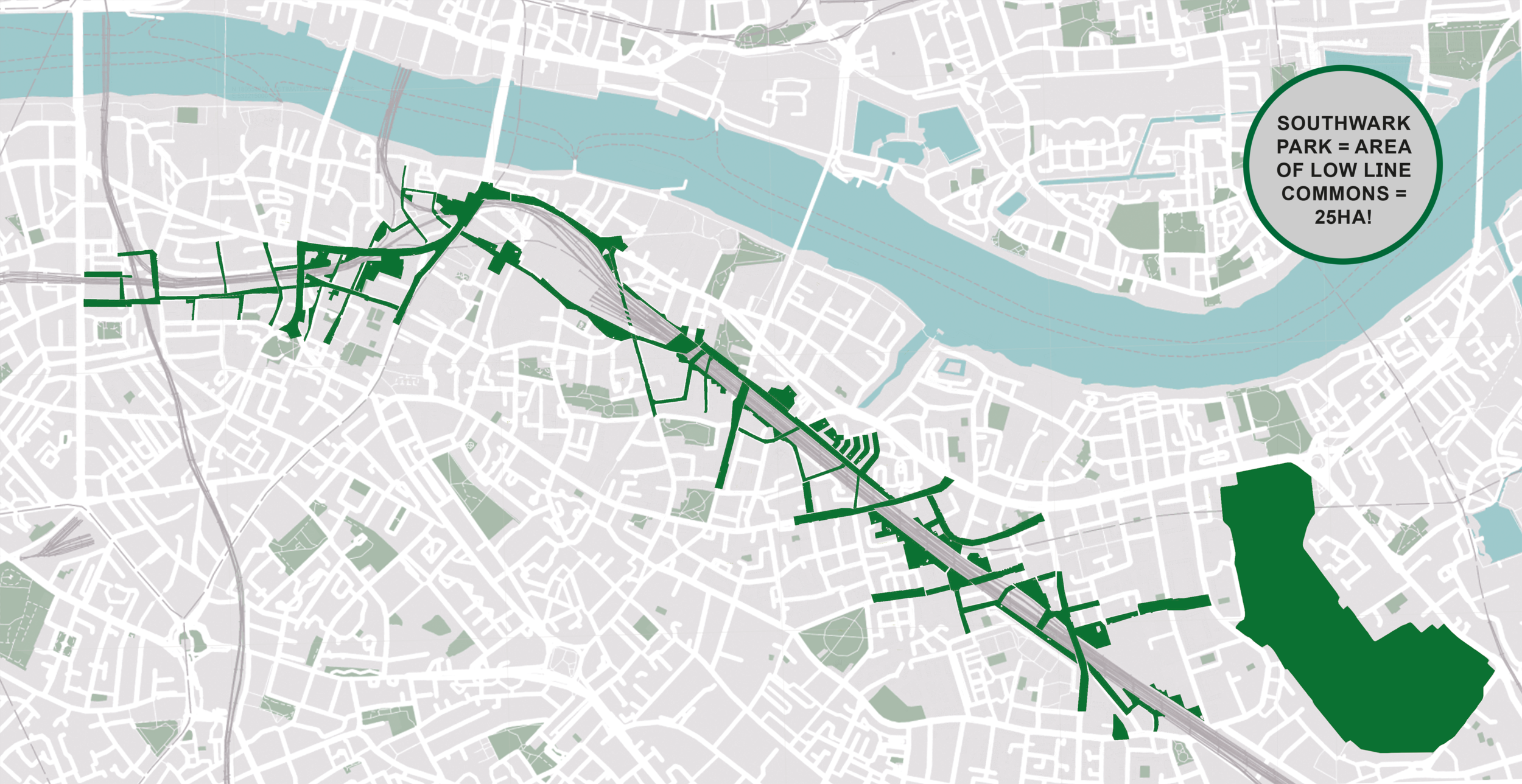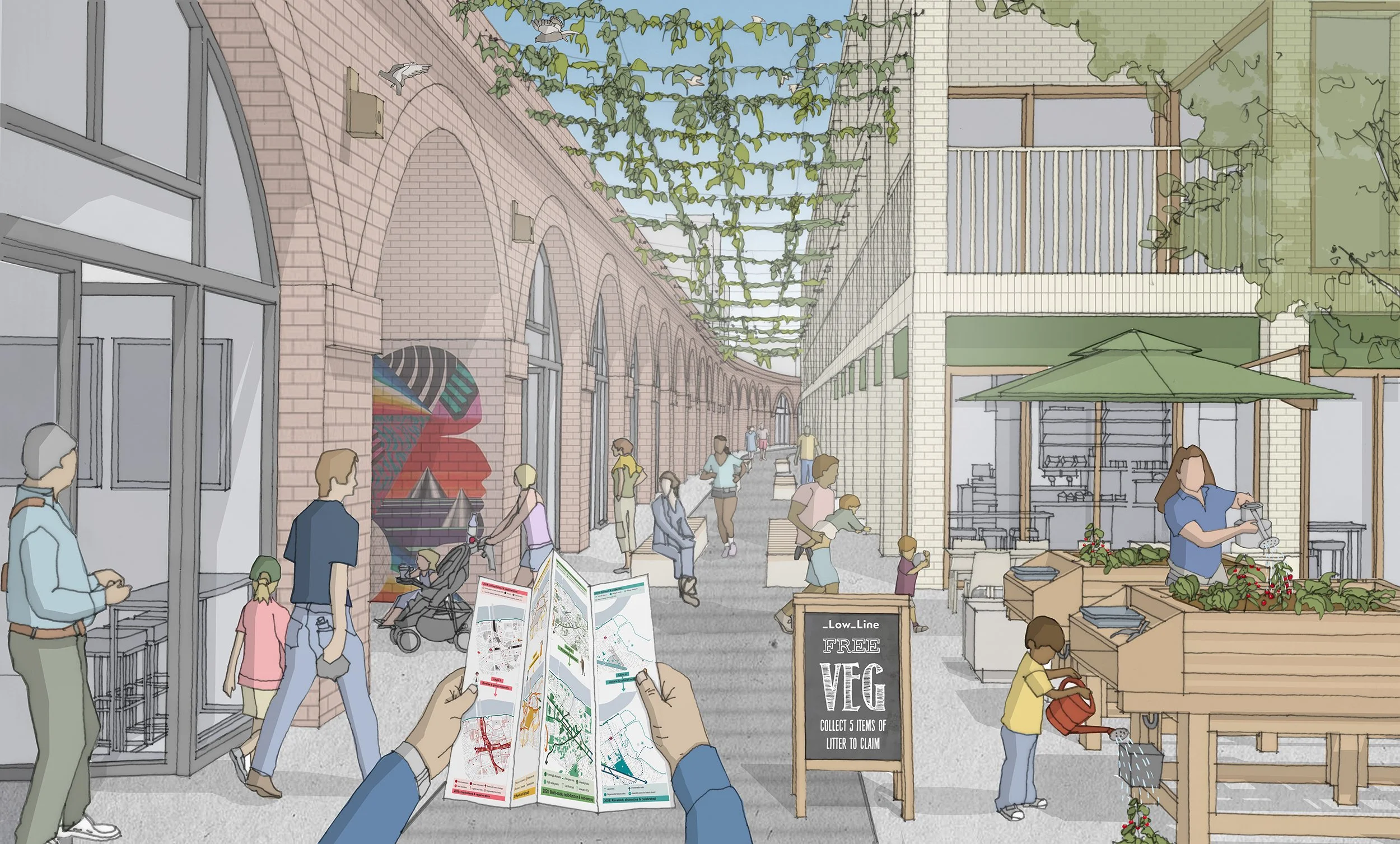Low Line scoops highest prize
‘Inspirational’ — the Low Line Commons: New London Awards overall winner
Featured in NLQ
London’s answer to the Highline - the Low Line Commons scheme - emerged victorious as the overall winner in this year’s New London Awards
Chosen from the Planning category for its transformative potential and source of inspiration for others by judges Peter Murray, Andreas Ruby, Benjamin Prosky and Eleanor Sharpe, the sustainable vision and strategy envisages the creation of a green corridor along the Victorian railway viaduct, meandering through Bankside, London Bridge and Bermondsey. Commissioned by Low Line partners, the project aims to connect people with nature and increase environmental resilience along its length by promoting innovative greening and sustainability projects that mitigate climate change. The project team said it celebrates the diversity and heritage of each neighbourhood with a series of hubs to encourage communities to unify and share a ‘sense of place’.
The streets and spaces around the viaduct currently divide neighbourhoods, block access, and create dark and oppressive spaces. The strategy therefore aims to tie these areas together into a coherent whole while celebrating diversity and unique characteristics.
A toolkit solution comprising 12 components is designed to provide the best response to each neighbourhood, with elements centring on establishing biodiversity and ecological connectivity, building climate resilience and connecting people with each other and nature. Responding to scale is also key, so spaces can be knitted together to function as a coherent place. Included are pocket parks, wildlife micro habitats, SuDS, planters and street trees, overhead habitats, productive private green spaces, sensory play areas, pedestrian priority, lighting, canopies, seating and pop-up uses.
Whether large or small, by great visionary designers or through local acts of love and care, together these hubs can make up a 3.5km cultural resource, say the backers. ‘The value of which is the commons approach, where residents and businesses coexist’.
Stitching communities together — the extent of the Low Line project’s scope
Shared action by the Low Line Partners — Better Bankside, Team London Bridge, Blue Bermondsey, Southwark Council and the Arch Company — with Friends of the Low Line, residents, businesses, landowners and developers, aim to deliver this coherent ‘green seam’. The ambition is for 50,000sqm biodiverse roofs, 500 new trees, 30 SuDS raingardens, 10,000 plants, 100 new wildlife habitats, 1,000sqm wildflower meadows, 500 sqm ‘grey to green’ de-paving projects, 30 pocket spaces supporting social interaction and 3.5km carriageway transformed to support green business and active travel.
Andreas Ruby, director of the Swiss Architecture Museum, said the scheme was his ‘heart choice’ for the way in which it will provide the ‘ultimate pleasure of living in the city’ — providing an ‘experienceable’ destination that tempts you to going the extra mile as well as exciting non-architects about the joy of planning and optimism for the future. ‘There’s a credible effort made here to talk to more than experts,’ he said. ‘It’s the single project that surprised me the most. I find it inspirational.’
Benjamin Prosky, executive director of the American Institute of Architects New York Chapter (AIANY) and the Center for Architecture, said he felt the project was interesting, and could see the need for it and for its potential to enliven the area. ‘I think it’s great. This is a singular thing for London. If they don’t do this, they are missing out on a great opportunity’.
Eleanor Sharpe, executive director at Philadelphia City Planning Commission, admired the idea of using the public realm and landscape to ‘solidify’ connections between neighbourhoods. ‘It seemed like this had a robust community engagement process. It wasn’t top down,’ she added. ‘The thing that I like about the Low Line Commons is an ability to experience the existing city, but in a new way. This is the thing that these kinds of connections will do. Your experience is transformed, and it allows you to be part of the fabric of London.’
View all the 2021 New London Awards winning projects at: nla.london/awards/new-london-awards
Green streets — how it might look along the Victorian viaduct arches
You can read the full article here or download a copy here.


